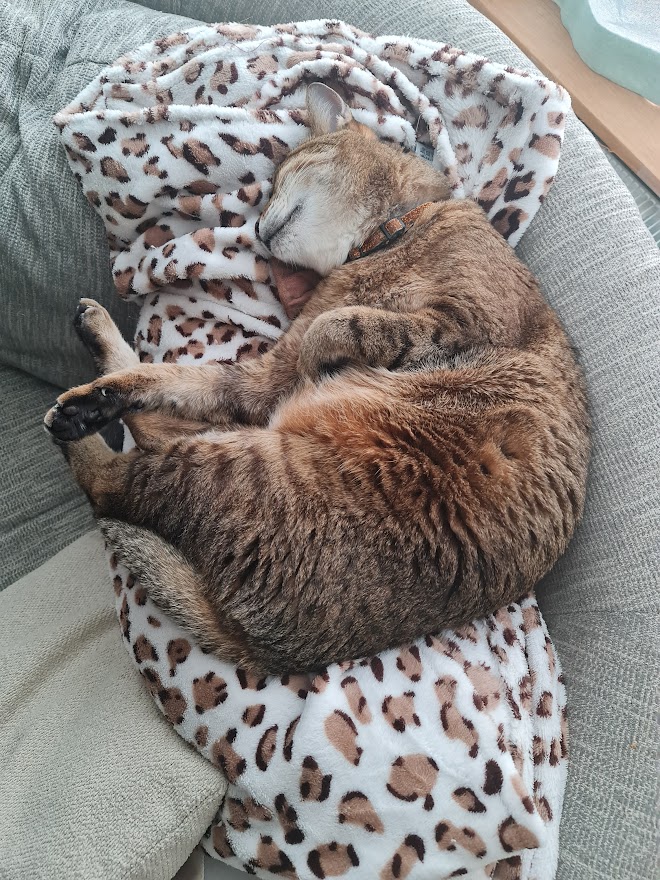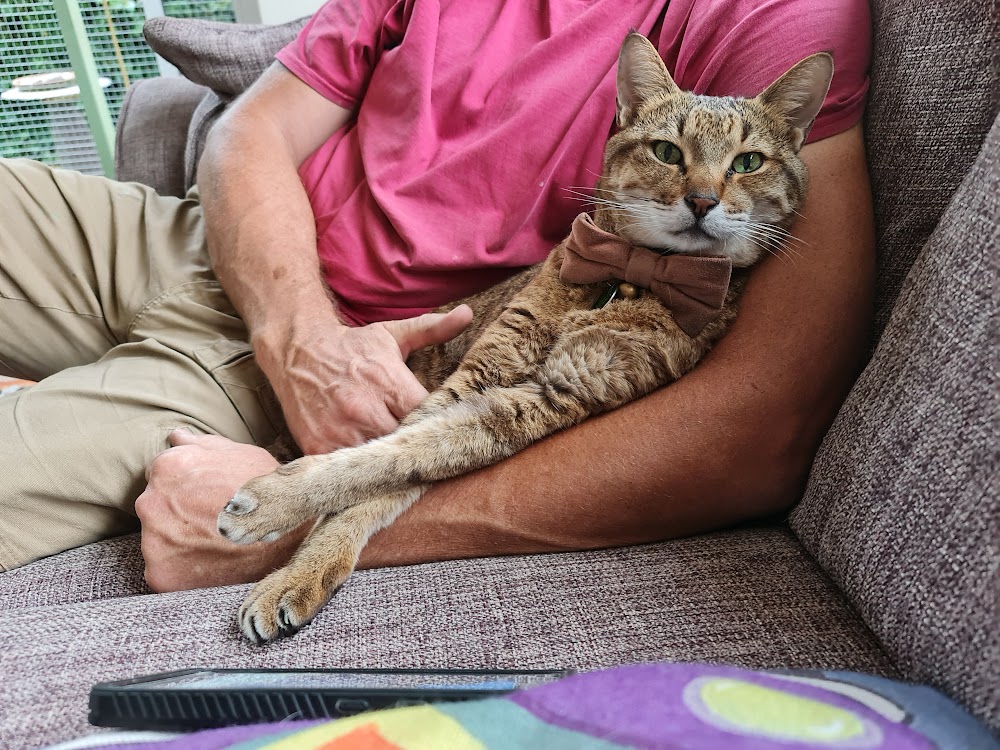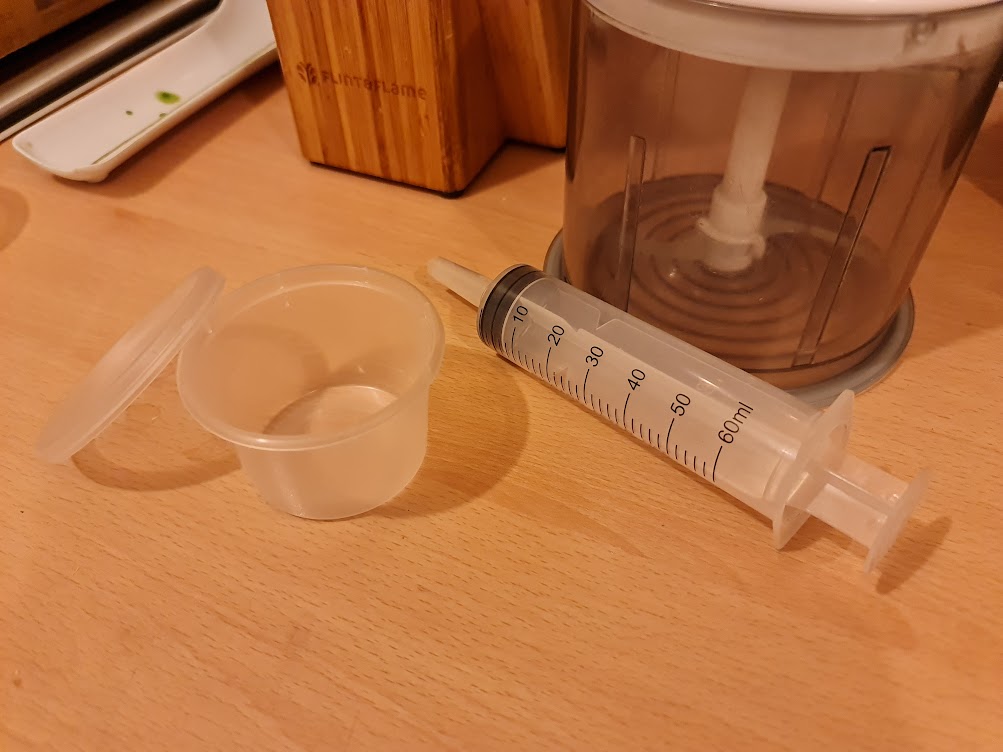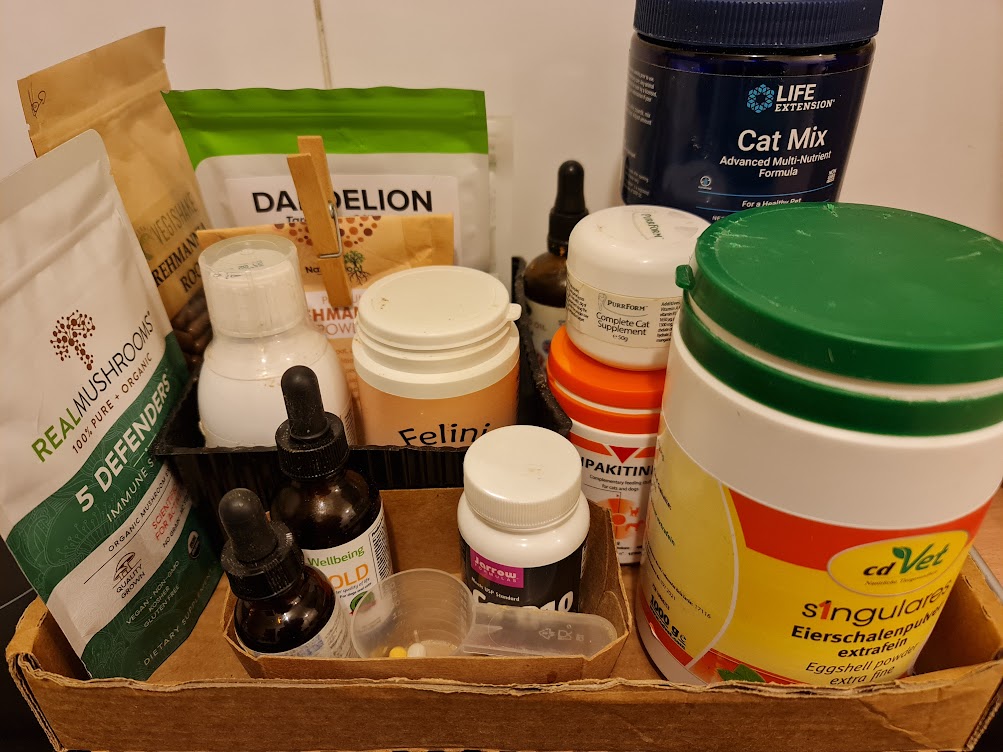Cats & Pancreatitis
Feb 09, 2023Disclaimer: I am not a veterinarian and cannot diagnose or treat your cat or prescribe drugs. However, I am a holistic care specialist and I do use safe natural remedies to help cats thrive. Any recommendations I make should be double-checked with your local veterinarian who has medical data on your particular cat and can give you the go-ahead when trying something new.
If you're reading this, chances are you have a cat who is facing a diagnosis of pancreatitis. Today, I'm going to share with you what I did after experiencing this, how I was able to help my cat and many others get better, and how you may take similar simple actions to help your cat feel better.
First of all, I want you to know that I have created an amazing resource for you to help your cat recover from pancreatitis.
This is my very own recovery blend, tried and tested, deemed appropriate and safe on several occasions by very well-known holistic and traditional veterinarians. My recovery blend is a very nutritious, supportive recipe designed to lift the well-being of your cat after a crisis, particularly when dealing with pancreatitis. If you want to give it a go, you can download it for free HERE.
Of course, this is not a miracle cure. If your cat is deep in a crisis, you need to provide your cat with the correct prompt emergency veterinary care. This article is meant to be an additional resource to help you get your cat to feel better after a crisis of pancreatitis by using my recipe, which you can download for free, and the instructions that I give you today should help you create the environment for you to use that recipe in the best possible way.
So let me start with a small story. About three years ago, my soul cat Pardino fell sick. This caught me completely by surprise. He didn't feel like eating as usual. Then after a few days, he completely stopped eating, which never happened before. I immediately started to worry, so I called the vet who said to wait and see how things were progressing. After another day of not eating, I was getting even more worried. The situation went on for a few days until we reached the weekend when my cat was not doing very well at all. He was now at a place where he didn't want to drink, therefore I became a day-and-night nurse for him. The electrolyte suggested by the vets was unavailable so I quickly made my own. I was giving him fluids by mouth every 20 minutes. I was trying to do everything I could to make him comfortable and to help him, but obviously, I didn't know exactly what I was dealing with at that stage. I already had a suspicion that this could be pancreatitis because I had run some tests and done a urinalysis with my cat at home a few times that week. Those results detected Glucose in his urine, which made me suspect that his pancreas was not able to secrete insulin correctly (as insulin would regulate glucose levels if all was well) and was therefore inflamed because my cat was not diabetic.

That was the longest weekend ever. It broke my heart to see him so unwell, and I desperately needed more radical ways to help him. It was very clear that my boy needed immediate medical attention, and I was very distressed for having no access to emergency care all week.
The following day, we were finally able to get the vet clinic to take him in. He essentially spent a week in intensive care. Unfortunately, there is only daycare available here; in the evening, cat guardians must take their sick cat to another location that is pretty far away because there is no 24-hour veterinary care available close to where I live. This is quite problematic, because being in the clinic involves stress, particularly for a cat who is already not feeling well, plus traveling implies more stress. Also, there are complications involved in moving a sick animal, including the fact that usually ill patients are fitted with a drip, with a needle in their front paw, and moving them means stopping the drip, bandaging their paw with the needle in place and sending them to a different doctor who has not seen them before, another person a cat needs to get used to for the night shift in order to be taken care of.
So... The global scarcity of veterinarians means for me, in Wales UK, that in an emergency I have to: reach the vets where my cat is hospitalized (20 mins drive), drive my cat 1 hour away from there (at exactly 6 pm), drive back home (another 1h 20mins drive), repeat the 1h 20mins drive to the night-clinic the next morning to pick my cat up (at exactly 7 am), and then drive him back to the day-clinic before heading home myself (another 1h 20mins drive for the way back). Rinse and repeat at 6 pm every day for however long my cat needs emergency care.
Now... I would do anything to help my cats, but this is a lot of driving to suddenly put on anybody, how can we expect everyone to make this work..? Also, being someone who keeps the emotional well-being of cats in high consideration, I cringe at the upheaval this process causes to cats who are already feeling unwell. After all, I teach cat parents to use cooperative and acknowledged care so that cats are handled successfully, without causing trauma, and without damage to the human-cat relationship, so I feel quite upset at not having a facility offering 24h veterinary care around here. This is where the importance of having good job-related conditions for veterinarians takes place so that more students decide to go down that route and perform this profession, and we don't end up with a global scarcity of doctors able to provide emergency care for our four-legged family members as a result. Suicide rates are high in the veterinary profession, and fixing working conditions leading to this would mean ultimately not only caring for an important sector of the academic population but also providing better care for our pets.
So, coming back to that moment in time, this sounded like something I didn't want to do to Pardino, especially knowing that I could provide my cat with adequate at-home care to transition him from one intensive day of treatment to the next. I gave up some sleep, but I made it work.

He was eventually released from intensive care by the end of the week. However, I was now left in charge of a cat who wasn't really interested in eating.
Many cat parents go through a pancreatitis crisis and arrive at the same point where their cats don't require immediate medical attention or intensive care but they aren't in a position where they are fully feeling better and wanting to eat their food naturally, either.

Since it didn't appear that he wanted to eat, I made the decision that I didn't want to just "wait" for him to be ready to eat on his own. In order to avoid a particular issue called hepatic lipidosys, he received some nutrition through IV fluids while he was at the vet's, but it's not the same as eating the right amount of calories that a cat should eat. As a result, by the time I got him fully back home at the end of the week, he had lost a considerable amount of weight, and I found myself in a dilemma. Pardino was either to immediately get to eat by mouth or through a feeding tube. Of course, feeding tubes are a great option in some situations. In my case, putting my cat under anesthesia.

However, in this case, I was certain that due to our close relationship and my training in taking supplements, my cat was likely able to tolerate syringe feeding from me. That's what I instruct students in my Jumpstart course. I decided to adopt this approach since we could avoid giving him anesthetic and, in addition, installing a feeding tube in him, which always comes with complications. I made the choice because I had faith that it was the right one.
I now compiled all the knowledge I had accumulated over the years during studying holistic medicine, holistic treatments, and natural remedies. To cut a long story short, I came up with this recipe, bought the appropriate food to blend with a little bit of filtered water, and then I started making the blend. Every day I would add one supplement, and after a couple of weeks, all the supplements were basically in the blend, so we just continued using this nourishing, really nourishing, supportive blend that was aiding my cat's recovery.

During that time, my cat lost weight. He went from weighing six kilograms, where he was in excellent condition, to 4.7 kilograms. He had lost 1.3 kilograms! Clearly, there was a significant difference. I could see how thin he was and it was painful to watch because I wanted him to quickly regain the weight he had lost. Of course, I wanted to feed him as much as I could so he could have the healthy food he needed to put on the weight again. Moreover, given that eating is a necessary component of rehabilitation from pancreatitis.
So, the first thing you want is for your cat to eat after it returns from the vet after receiving intensive care. As a result, the condition improves and the system essentially regains health within a few months. I was delighted that my cat had returned to his usual weight—or was extremely near to it—of six kilograms. I could cut back on the daily mixture I was giving him. I continued doing it because it was a great source of support, but when the quantity decreased, I had to alter my routine somewhat to accommodate the new requirements.
This has helped him to fully recuperate his health. And the vet was astonished to see how well my cat was doing after just two months when he was back to his usual weight and in such good health. In order to better assist you, I sincerely want this material I made to be available to you without charge because having a cat with pancreatitis is quite hard. Your cat finds it hard. And as cat parents, we find it hard too.
There are four simple steps on how to put this protocol in place for the long-term support of your cat affected by pancreatitis:
1. Mindset
I want to start out by discussing mindset. To approach this method effectively, correctly, and in a way that brings you favorable results, you must have an open mind. In the Western world, we are accustomed to treating symptoms using conventional medicine. Natural supplements and herbal remedies, on the other hand, may take a little longer to work. Additionally, we must keep in mind that each cat is unique and that each cat’s response to natural supplements varies significantly. However, because there may be some challenges along the way, you must be flexible, determined, patient, and have a positive can-do attitude.
2. Setting everything set up correctly
Setting everything up is the second process that we want to address. This is crucial since it allows you to prepare all the components beforehand. The process is improved by having a plan that is simple to implement. This is what I teach students to do in my course at Jumpstart, where I also show them how to syringe-feed their cats, provide nutrients to them in a way that is not traumatizing to anyone, and monitor their cats at home. Therefore, my advice to you is to prepare all of these things in advance so that you are prepared when it comes time to syringe feed. Basically, you want to collect every supplement I included in my recipe. Next, you should invest in the best-canned food you can afford that is simple to blend, with a decent blender, and a small amount of filtered water. Then you should make the mixture one at a time, adding an additional supplement each time. Basically by a few weeks later, you'll have the entire mixture prepared, along with all the nutrients and the ability to fully nourish your cat's system. Additionally, you should arrange your necessary equipment in advance.
3. Getting your routine in place
Establishing a routine is the next topic we wanted to discuss. This is significant for two reasons. One of them is that your cat will grow accustomed to a schedule. Therefore, the more you can space out those feedings throughout the day, the better, as you may use smaller, easier-for-the-tummy-to-handle feedings rather than larger ones. Additionally, it takes less time, allowing your cat to develop a rhythm of feeding every few hours. Along with helping the pancreas return to normal, this is also beneficial to you because we don't want a care protocol to take up too much of your time, making you resent it or making it impossible for you to implement. Therefore, you want to be in a position where you can establish a pattern and easily fit those feedings into your daily life in order to provide them on a regular basis.
4. Tracking
Finally, we want to discuss tracking. Tracking is important because if you don't weigh your cat, you are assuming that after some time you will be able to know how much weight she is acquiring. You also want to be sure that you record any events that occur during this procedure, such as "this happened on that day" or "that happened on the other day at that time," etc. Since you want to remember them, writing them down will help you avoid forgetting them. After having multiple vets review the recipe and ensure that all the ingredients were safe and well tolerated by the majority of cats, I used it on a number of clients. Tracking is crucial, as I said because you want to ensure that you track these occurrences. Of course, I always, always advise my clients to double check with their own vet since they will have their own data on their own particular cat. Furthermore, be sure to keep track of your cat's progress so that you will not overlook any details.
There you go. four simple steps on how to put this protocol in place for the long-term support of your cat affected by pancreatitis. Don't forget to download your recipe HERE.

